Non-Steroidal Anti-Inflammatory Drugs
Opioids
Analgesics
Adjuvant Analgesics
Dogs
Cats
Horses
Livestock
Oral
Injections
Transdermal
Topical
Veterinary Hospitals
Clinics
Research Institutes
North America
Europe
South America
Asia Pacific
Middle East and Africa
North America Outlook (USD Billion, 2019-2035)
North America Veterinary Pain Management Market by Product Type
Non-Steroidal Anti-Inflammatory Drugs
Opioids
Analgesics
Adjuvant Analgesics
North America Veterinary Pain Management Market by Animal Type
Dogs
Cats
Horses
Livestock
North America Veterinary Pain Management Market by Route of Administration Type
Oral
Injections
Transdermal
Topical
North America Veterinary Pain Management Market by End User Type
Veterinary Hospitals
Clinics
Research Institutes
North America Veterinary Pain Management Market by Regional Type
US
Canada
US Outlook (USD Billion, 2019-2035)
US Veterinary Pain Management Market by Product Type
Non-Steroidal Anti-Inflammatory Drugs
Opioids
Analgesics
Adjuvant Analgesics
US Veterinary Pain Management Market by Animal Type
Dogs
Cats
Horses
Livestock
US Veterinary Pain Management Market by Route of Administration Type
Oral
Injections
Transdermal
Topical
US Veterinary Pain Management Market by End User Type
Veterinary Hospitals
Clinics
Research Institutes
CANADA Outlook (USD Billion, 2019-2035)
CANADA Veterinary Pain Management Market by Product Type
Non-Steroidal Anti-Inflammatory Drugs
Opioids
Analgesics
Adjuvant Analgesics
CANADA Veterinary Pain Management Market by Animal Type
Dogs
Cats
Horses
Livestock
CANADA Veterinary Pain Management Market by Route of Administration Type
Oral
Injections
Transdermal
Topical
CANADA Veterinary Pain Management Market by End User Type
Veterinary Hospitals
Clinics
Research Institutes
Europe Outlook (USD Billion, 2019-2035)
Europe Veterinary Pain Management Market by Product Type
Non-Steroidal Anti-Inflammatory Drugs
Opioids
Analgesics
Adjuvant Analgesics
Europe Veterinary Pain Management Market by Animal Type
Dogs
Cats
Horses
Livestock
Europe Veterinary Pain Management Market by Route of Administration Type
Oral
Injections
Transdermal
Topical
Europe Veterinary Pain Management Market by End User Type
Veterinary Hospitals
Clinics
Research Institutes
Europe Veterinary Pain Management Market by Regional Type
Germany
UK
France
Russia
Italy
Spain
Rest of Europe
GERMANY Outlook (USD Billion, 2019-2035)
GERMANY Veterinary Pain Management Market by Product Type
Non-Steroidal Anti-Inflammatory Drugs
Opioids
Analgesics
Adjuvant Analgesics
GERMANY Veterinary Pain Management Market by Animal Type
Dogs
Cats
Horses
Livestock
GERMANY Veterinary Pain Management Market by Route of Administration Type
Oral
Injections
Transdermal
Topical
GERMANY Veterinary Pain Management Market by End User Type
Veterinary Hospitals
Clinics
Research Institutes
UK Outlook (USD Billion, 2019-2035)
UK Veterinary Pain Management Market by Product Type
Non-Steroidal Anti-Inflammatory Drugs
Opioids
Analgesics
Adjuvant Analgesics
UK Veterinary Pain Management Market by Animal Type
Dogs
Cats
Horses
Livestock
UK Veterinary Pain Management Market by Route of Administration Type
Oral
Injections
Transdermal
Topical
UK Veterinary Pain Management Market by End User Type
Veterinary Hospitals
Clinics
Research Institutes
FRANCE Outlook (USD Billion, 2019-2035)
FRANCE Veterinary Pain Management Market by Product Type
Non-Steroidal Anti-Inflammatory Drugs
Opioids
Analgesics
Adjuvant Analgesics
FRANCE Veterinary Pain Management Market by Animal Type
Dogs
Cats
Horses
Livestock
FRANCE Veterinary Pain Management Market by Route of Administration Type
Oral
Injections
Transdermal
Topical
FRANCE Veterinary Pain Management Market by End User Type
Veterinary Hospitals
Clinics
Research Institutes
RUSSIA Outlook (USD Billion, 2019-2035)
RUSSIA Veterinary Pain Management Market by Product Type
Non-Steroidal Anti-Inflammatory Drugs
Opioids
Analgesics
Adjuvant Analgesics
RUSSIA Veterinary Pain Management Market by Animal Type
Dogs
Cats
Horses
Livestock
RUSSIA Veterinary Pain Management Market by Route of Administration Type
Oral
Injections
Transdermal
Topical
RUSSIA Veterinary Pain Management Market by End User Type
Veterinary Hospitals
Clinics
Research Institutes
ITALY Outlook (USD Billion, 2019-2035)
ITALY Veterinary Pain Management Market by Product Type
Non-Steroidal Anti-Inflammatory Drugs
Opioids
Analgesics
Adjuvant Analgesics
ITALY Veterinary Pain Management Market by Animal Type
Dogs
Cats
Horses
Livestock
ITALY Veterinary Pain Management Market by Route of Administration Type
Oral
Injections
Transdermal
Topical
ITALY Veterinary Pain Management Market by End User Type
Veterinary Hospitals
Clinics
Research Institutes
SPAIN Outlook (USD Billion, 2019-2035)
SPAIN Veterinary Pain Management Market by Product Type
Non-Steroidal Anti-Inflammatory Drugs
Opioids
Analgesics
Adjuvant Analgesics
SPAIN Veterinary Pain Management Market by Animal Type
Dogs
Cats
Horses
Livestock
SPAIN Veterinary Pain Management Market by Route of Administration Type
Oral
Injections
Transdermal
Topical
SPAIN Veterinary Pain Management Market by End User Type
Veterinary Hospitals
Clinics
Research Institutes
REST OF EUROPE Outlook (USD Billion, 2019-2035)
REST OF EUROPE Veterinary Pain Management Market by Product Type
Non-Steroidal Anti-Inflammatory Drugs
Opioids
Analgesics
Adjuvant Analgesics
REST OF EUROPE Veterinary Pain Management Market by Animal Type
Dogs
Cats
Horses
Livestock
REST OF EUROPE Veterinary Pain Management Market by Route of Administration Type
Oral
Injections
Transdermal
Topical
REST OF EUROPE Veterinary Pain Management Market by End User Type
Veterinary Hospitals
Clinics
Research Institutes
APAC Outlook (USD Billion, 2019-2035)
APAC Veterinary Pain Management Market by Product Type
Non-Steroidal Anti-Inflammatory Drugs
Opioids
Analgesics
Adjuvant Analgesics
APAC Veterinary Pain Management Market by Animal Type
Dogs
Cats
Horses
Livestock
APAC Veterinary Pain Management Market by Route of Administration Type
Oral
Injections
Transdermal
Topical
APAC Veterinary Pain Management Market by End User Type
Veterinary Hospitals
Clinics
Research Institutes
APAC Veterinary Pain Management Market by Regional Type
China
India
Japan
South Korea
Malaysia
Thailand
Indonesia
Rest of APAC
CHINA Outlook (USD Billion, 2019-2035)
CHINA Veterinary Pain Management Market by Product Type
Non-Steroidal Anti-Inflammatory Drugs
Opioids
Analgesics
Adjuvant Analgesics
CHINA Veterinary Pain Management Market by Animal Type
Dogs
Cats
Horses
Livestock
CHINA Veterinary Pain Management Market by Route of Administration Type
Oral
Injections
Transdermal
Topical
CHINA Veterinary Pain Management Market by End User Type
Veterinary Hospitals
Clinics
Research Institutes
INDIA Outlook (USD Billion, 2019-2035)
INDIA Veterinary Pain Management Market by Product Type
Non-Steroidal Anti-Inflammatory Drugs
Opioids
Analgesics
Adjuvant Analgesics
INDIA Veterinary Pain Management Market by Animal Type
Dogs
Cats
Horses
Livestock
INDIA Veterinary Pain Management Market by Route of Administration Type
Oral
Injections
Transdermal
Topical
INDIA Veterinary Pain Management Market by End User Type
Veterinary Hospitals
Clinics
Research Institutes
JAPAN Outlook (USD Billion, 2019-2035)
JAPAN Veterinary Pain Management Market by Product Type
Non-Steroidal Anti-Inflammatory Drugs
Opioids
Analgesics
Adjuvant Analgesics
JAPAN Veterinary Pain Management Market by Animal Type
Dogs
Cats
Horses
Livestock
JAPAN Veterinary Pain Management Market by Route of Administration Type
Oral
Injections
Transdermal
Topical
JAPAN Veterinary Pain Management Market by End User Type
Veterinary Hospitals
Clinics
Research Institutes
SOUTH KOREA Outlook (USD Billion, 2019-2035)
SOUTH KOREA Veterinary Pain Management Market by Product Type
Non-Steroidal Anti-Inflammatory Drugs
Opioids
Analgesics
Adjuvant Analgesics
SOUTH KOREA Veterinary Pain Management Market by Animal Type
Dogs
Cats
Horses
Livestock
SOUTH KOREA Veterinary Pain Management Market by Route of Administration Type
Oral
Injections
Transdermal
Topical
SOUTH KOREA Veterinary Pain Management Market by End User Type
Veterinary Hospitals
Clinics
Research Institutes
MALAYSIA Outlook (USD Billion, 2019-2035)
MALAYSIA Veterinary Pain Management Market by Product Type
Non-Steroidal Anti-Inflammatory Drugs
Opioids
Analgesics
Adjuvant Analgesics
MALAYSIA Veterinary Pain Management Market by Animal Type
Dogs
Cats
Horses
Livestock
MALAYSIA Veterinary Pain Management Market by Route of Administration Type
Oral
Injections
Transdermal
Topical
MALAYSIA Veterinary Pain Management Market by End User Type
Veterinary Hospitals
Clinics
Research Institutes
THAILAND Outlook (USD Billion, 2019-2035)
THAILAND Veterinary Pain Management Market by Product Type
Non-Steroidal Anti-Inflammatory Drugs
Opioids
Analgesics
Adjuvant Analgesics
THAILAND Veterinary Pain Management Market by Animal Type
Dogs
Cats
Horses
Livestock
THAILAND Veterinary Pain Management Market by Route of Administration Type
Oral
Injections
Transdermal
Topical
THAILAND Veterinary Pain Management Market by End User Type
Veterinary Hospitals
Clinics
Research Institutes
INDONESIA Outlook (USD Billion, 2019-2035)
INDONESIA Veterinary Pain Management Market by Product Type
Non-Steroidal Anti-Inflammatory Drugs
Opioids
Analgesics
Adjuvant Analgesics
INDONESIA Veterinary Pain Management Market by Animal Type
Dogs
Cats
Horses
Livestock
INDONESIA Veterinary Pain Management Market by Route of Administration Type
Oral
Injections
Transdermal
Topical
INDONESIA Veterinary Pain Management Market by End User Type
Veterinary Hospitals
Clinics
Research Institutes
REST OF APAC Outlook (USD Billion, 2019-2035)
REST OF APAC Veterinary Pain Management Market by Product Type
Non-Steroidal Anti-Inflammatory Drugs
Opioids
Analgesics
Adjuvant Analgesics
REST OF APAC Veterinary Pain Management Market by Animal Type
Dogs
Cats
Horses
Livestock
REST OF APAC Veterinary Pain Management Market by Route of Administration Type
Oral
Injections
Transdermal
Topical
REST OF APAC Veterinary Pain Management Market by End User Type
Veterinary Hospitals
Clinics
Research Institutes
South America Outlook (USD Billion, 2019-2035)
South America Veterinary Pain Management Market by Product Type
Non-Steroidal Anti-Inflammatory Drugs
Opioids
Analgesics
Adjuvant Analgesics
South America Veterinary Pain Management Market by Animal Type
Dogs
Cats
Horses
Livestock
South America Veterinary Pain Management Market by Route of Administration Type
Oral
Injections
Transdermal
Topical
South America Veterinary Pain Management Market by End User Type
Veterinary Hospitals
Clinics
Research Institutes
South America Veterinary Pain Management Market by Regional Type
Brazil
Mexico
Argentina
Rest of South America
BRAZIL Outlook (USD Billion, 2019-2035)
BRAZIL Veterinary Pain Management Market by Product Type
Non-Steroidal Anti-Inflammatory Drugs
Opioids
Analgesics
Adjuvant Analgesics
BRAZIL Veterinary Pain Management Market by Animal Type
Dogs
Cats
Horses
Livestock
BRAZIL Veterinary Pain Management Market by Route of Administration Type
Oral
Injections
Transdermal
Topical
BRAZIL Veterinary Pain Management Market by End User Type
Veterinary Hospitals
Clinics
Research Institutes
MEXICO Outlook (USD Billion, 2019-2035)
MEXICO Veterinary Pain Management Market by Product Type
Non-Steroidal Anti-Inflammatory Drugs
Opioids
Analgesics
Adjuvant Analgesics
MEXICO Veterinary Pain Management Market by Animal Type
Dogs
Cats
Horses
Livestock
MEXICO Veterinary Pain Management Market by Route of Administration Type
Oral
Injections
Transdermal
Topical
MEXICO Veterinary Pain Management Market by End User Type
Veterinary Hospitals
Clinics
Research Institutes
ARGENTINA Outlook (USD Billion, 2019-2035)
ARGENTINA Veterinary Pain Management Market by Product Type
Non-Steroidal Anti-Inflammatory Drugs
Opioids
Analgesics
Adjuvant Analgesics
ARGENTINA Veterinary Pain Management Market by Animal Type
Dogs
Cats
Horses
Livestock
ARGENTINA Veterinary Pain Management Market by Route of Administration Type
Oral
Injections
Transdermal
Topical
ARGENTINA Veterinary Pain Management Market by End User Type
Veterinary Hospitals
Clinics
Research Institutes
REST OF SOUTH AMERICA Outlook (USD Billion, 2019-2035)
REST OF SOUTH AMERICA Veterinary Pain Management Market by Product Type
Non-Steroidal Anti-Inflammatory Drugs
Opioids
Analgesics
Adjuvant Analgesics
REST OF SOUTH AMERICA Veterinary Pain Management Market by Animal Type
Dogs
Cats
Horses
Livestock
REST OF SOUTH AMERICA Veterinary Pain Management Market by Route of Administration Type
Oral
Injections
Transdermal
Topical
REST OF SOUTH AMERICA Veterinary Pain Management Market by End User Type
Veterinary Hospitals
Clinics
Research Institutes
MEA Outlook (USD Billion, 2019-2035)
MEA Veterinary Pain Management Market by Product Type
Non-Steroidal Anti-Inflammatory Drugs
Opioids
Analgesics
Adjuvant Analgesics
MEA Veterinary Pain Management Market by Animal Type
Dogs
Cats
Horses
Livestock
MEA Veterinary Pain Management Market by Route of Administration Type
Oral
Injections
Transdermal
Topical
MEA Veterinary Pain Management Market by End User Type
Veterinary Hospitals
Clinics
Research Institutes
MEA Veterinary Pain Management Market by Regional Type
GCC Countries
South Africa
Rest of MEA
GCC COUNTRIES Outlook (USD Billion, 2019-2035)
GCC COUNTRIES Veterinary Pain Management Market by Product Type
Non-Steroidal Anti-Inflammatory Drugs
Opioids
Analgesics
Adjuvant Analgesics
GCC COUNTRIES Veterinary Pain Management Market by Animal Type
Dogs
Cats
Horses
Livestock
GCC COUNTRIES Veterinary Pain Management Market by Route of Administration Type
Oral
Injections
Transdermal
Topical
GCC COUNTRIES Veterinary Pain Management Market by End User Type
Veterinary Hospitals
Clinics
Research Institutes
SOUTH AFRICA Outlook (USD Billion, 2019-2035)
SOUTH AFRICA Veterinary Pain Management Market by Product Type
Non-Steroidal Anti-Inflammatory Drugs
Opioids
Analgesics
Adjuvant Analgesics
SOUTH AFRICA Veterinary Pain Management Market by Animal Type
Dogs
Cats
Horses
Livestock
SOUTH AFRICA Veterinary Pain Management Market by Route of Administration Type
Oral
Injections
Transdermal
Topical
SOUTH AFRICA Veterinary Pain Management Market by End User Type
Veterinary Hospitals
Clinics
Research Institutes
REST OF MEA Outlook (USD Billion, 2019-2035)
REST OF MEA Veterinary Pain Management Market by Product Type
Non-Steroidal Anti-Inflammatory Drugs
Opioids
Analgesics
Adjuvant Analgesics
REST OF MEA Veterinary Pain Management Market by Animal Type
Dogs
Cats
Horses
Livestock
REST OF MEA Veterinary Pain Management Market by Route of Administration Type
Oral
Injections
Transdermal
Topical
REST OF MEA Veterinary Pain Management Market by End User Type
Veterinary Hospitals
Clinics
Research Institutes
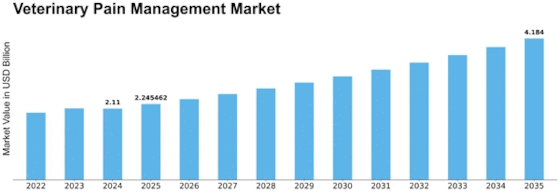

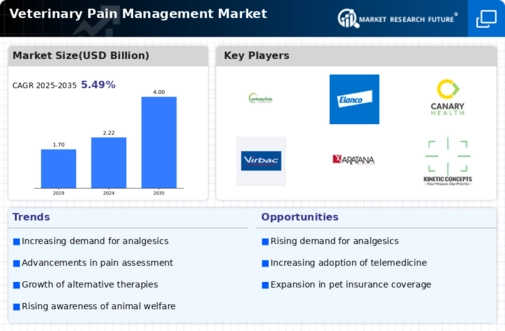
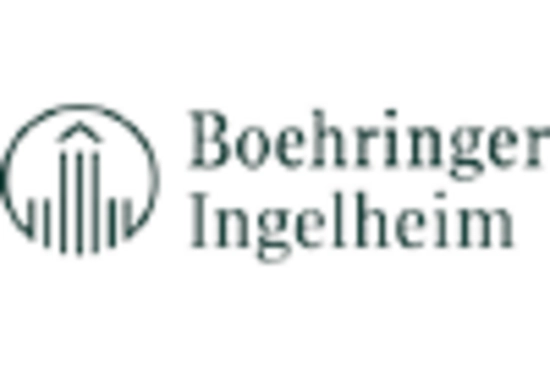
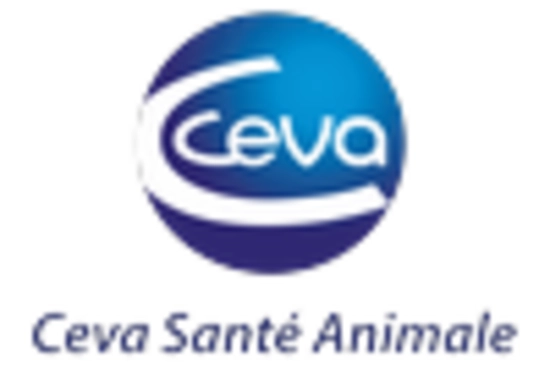
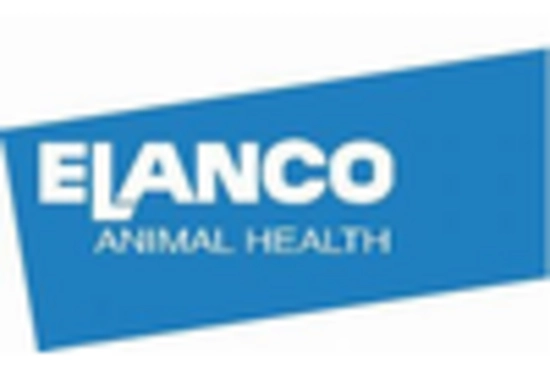

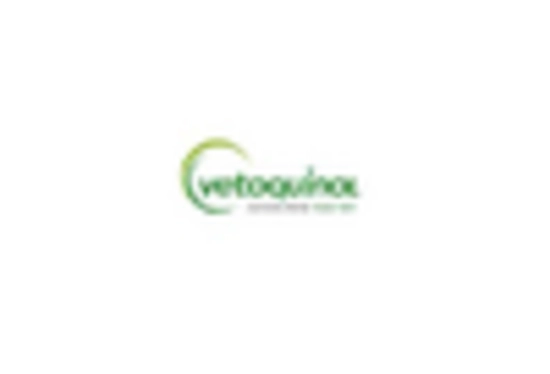
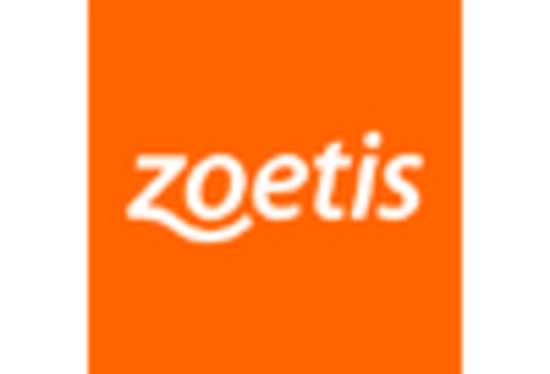

Leave a Comment